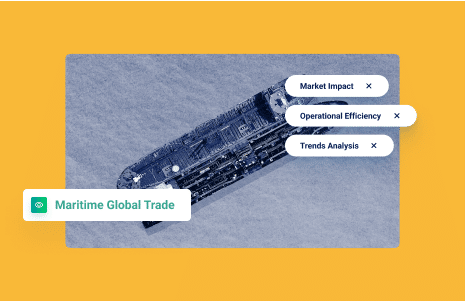Course Deviations are Skyrocketing in Red Sea/Gulf of Aden Area

What’s inside?
Saudi Arabia has asked its ally, the United States, to show restraint in responding to Red Sea attacks and disruption by Yemen’s Houthi rebels, according to Reuters. These attacks have the potential to paralyze important trade routes and Windward’s AI-driven insights show a significant number of vessels have already started altering their routes…
Review of Recent Regional Regulations
The International Maritime Organization published the “Jeddah Amendment to the Djibouti Code of Conduct” in 2017. The amendment is aimed at creating a safer environment for maritime activity and regards three main concerns – piracy, armed robbery, and illegal, unreported, and unregulated (IUU) fishing.
The amendment is mostly focused on enforcement by authorities and safety measurements of pursuit, and not sailing regulations for vessels. The International Sailing Federation states that due to the danger of piracy and armed robbery in the area, vessels that are required to transmit their AIS should transmit limited information restricted to the vessel’s identity, position, course, speed, navigational status, and safety-related information.
Yachts should also keep their AIS transmitter on for signaling their position to warships. This is especially relevant for the Gulf of Aden, while in the Somali Basin it is recommended to turn off the AIS transmitter. Windward is seeing a sudden spike in vessels choosing to “go dark” in the Red Sea…
A 200% Increase in Dark Activities?
Windward’s Maritime AI™ Platform illustrates a marked escalation in dark activities by cargo vessels within Saudi Arabia’s exclusive economic zone (EEZ) in the Red Sea. Typically averaging 42 such incidents from October 2022 through September 2023, the count surged to 74 in October and went even higher in November to 81, representing an increase of nearly 200%.

(October 2022-November 2023)
This behavior could be interpreted as an attempt by vessels to “lower their profile” amidst rising regional tensions, an increase in potential privacy, or a combination of the two.
The increase in AIS signal loss events in Bab El-Mandeb and the southern Red Sea merits particular attention. The number of AIS signal loss events in the southern Red Sea and Bab El-Mandeb straits grew from an average of 62 incidents between October 2022-September 2023, to 99 in October.
It went even higher to 121 in November, representing another uptick of nearly 200%. An analysis of seasonal patterns has revealed that these incidents are unlikely to be attributed to weather-related disruptions to signal reception.

A significant spike in dark activities by Iranian-flagged fishing vessels was recorded in the Gulf of Aden, marking the highest level of such incidents observed over almost four years, in November 2023.
The pattern of dark activities by Iranian-flagged fishing vessels in the Gulf of Aden aligns with the fishing seasons of March-June and September-November. The unprecedented spike in such activities, even during peak seasons, raises the suspicion of ulterior motives, possibly utilizing the fishing operations as a facade for arms smuggling operations to Yemen. This trend aligns with profiles of vessels previously implicated, according to open-source reports, in illicit arms transfers in the region.
Southern Entrance to the Red Sea and Gulf of Aden
The number of course deviations in the area connecting the Arabian Sea to the Gulf of Aden and the Red Sea has dramatically increased, according to Windward’s AI-powered platform, from an average of 41 between December 2022-September 2023, to 143 in October and 164 in November.
Segmentation by classes reveals that the most significant change occurred among cargo and service vessels, with a 336% and 550% increase in the average number of course deviations in October-November 2023 compared to previous months, respectively.

Has there already been an impact on freight rates?
“Freightos Data shows that while the average cost per container for Asia-Mediterranean shipments had increased only 9% by the end of November compared to October, rates from some Chinese origins to Israel climbed between 16%-36%, suggesting that the war is leading to higher costs for carriers and higher prices for their customers,” according to Judah Levine, Head of Research at Israeli online freight marketplace Freightos.
Stay Tuned
Windward will continue to monitor this situation. Check out our previous blog post to see recommended steps for dealing with this evolving situation.








